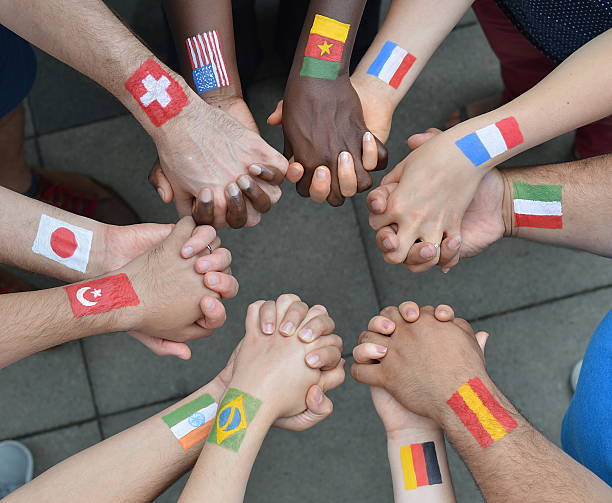How to Navigate Cultural Differences While Traveling: A Practical Guide
Traveling to new countries and experiencing different cultures is one of the most enriching aspects of being a globetrotter. However, cultural differences can sometimes lead to misunderstandings or uncomfortable situations if you’re not prepared. Respecting and adapting to local customs, traditions, and social norms is key to having a positive and meaningful travel experience. Here’s how to navigate cultural differences while traveling, with tips on body language, etiquette, and understanding local customs.
1. Do Your Research Before You Go
One of the best ways to avoid cultural misunderstandings is by educating yourself about the destination you’re visiting. Understanding basic cultural norms will help you feel more confident and prepared.
What to Research:
- Greetings: Different cultures have various ways of greeting each other, such as handshakes, bowing, or cheek kissing. Know what’s appropriate in the country you’re visiting.
- Dress Code: Some cultures have strict dress codes, especially in religious sites. Check local customs to make sure you’re dressing respectfully.
- Tipping Practices: In some countries, tipping is expected, while in others it can be considered rude or unnecessary.
- Social Norms: Be aware of how people interact in public spaces—some cultures are more reserved, while others may have a more open approach to public displays of affection or emotions.
2. Learn a Few Key Phrases in the Local Language
While English is widely spoken in many parts of the world, it’s always appreciated when travelers make an effort to speak the local language, even if it’s just a few words. Knowing how to say “hello,” “thank you,” and “goodbye” can go a long way in building rapport and showing respect for the local culture.
Basic Phrases to Learn:
- Hello: Greet locals with a simple “hello” or “good morning” in their language.
- Thank you: Saying thank you in the local language shows appreciation for the kindness you may receive.
- Please: Good manners transcend cultures—always say “please” when asking for something.
- Goodbye: A respectful goodbye acknowledges the end of an interaction.
Even if you’re not fluent, locals often appreciate the effort to communicate in their language, and it can make you seem more approachable and respectful.
3. Mind Your Body Language
Non-verbal communication, including body language, can vary significantly across cultures. What’s acceptable in one country may be considered rude in another. Being mindful of how you carry yourself can help you avoid misunderstandings.
Key Body Language Tips:
- Personal Space: Some cultures value personal space and prefer a wider physical distance between individuals (e.g., in much of Europe and North America), while others (e.g., in the Middle East, South America, and parts of Asia) may be more comfortable with close proximity during conversations.
- Hand Gestures: A gesture that’s common and innocent in one country may be offensive in another. For example, the “thumbs up” gesture is a positive sign in many places but can be insulting in parts of the Middle East and Southeast Asia.
- Eye Contact: In many Western cultures, maintaining eye contact is seen as a sign of attentiveness and respect. In contrast, in some Asian cultures, too much eye contact can be seen as a challenge or a sign of aggression, while in some African and Middle Eastern cultures, prolonged eye contact can indicate disrespect.
- Touching: The way people engage physically—such as hugging, kissing on the cheek, or shaking hands—varies from one culture to another. Always observe and follow the local customs regarding touch, especially when meeting new people.
4. Respect Local Etiquette and Customs
Local customs can range from dining rituals to specific rules around politeness. Observing these traditions not only helps you avoid faux pas, but it also shows that you respect and appreciate the local way of life.
Dining Etiquette:
- Eating with Hands: In some parts of the world (like India and the Middle East), it’s common to eat with your hands, but there are specific rules. For instance, in India, it’s customary to eat with your right hand only, as the left hand is considered impolite for eating.
- Table Manners: In Japan, it’s polite to slurp your noodles, as it shows appreciation for the meal. However, in other countries, such as the U.S. and France, slurping can be considered rude.
- Offering Food and Drink: In some cultures, you may be offered food or drink multiple times before it’s polite to refuse. In other places, you may be expected to politely decline the first offer.
- Eating Etiquette in Religious Settings: In some countries, you may be invited to partake in a meal as part of a religious or cultural celebration. In such cases, avoid declining invitations unless necessary, as it may be seen as disrespectful.
Religious and Spiritual Sensitivity:
- Visiting Religious Sites: Always be aware of the dress code and behavior when visiting temples, mosques, or churches. In many places, covering your shoulders, legs, and sometimes your head is required. Removing your shoes before entering a sacred space is also common in many cultures.
- Quiet Respect: In some cultures, silence or minimal talking is expected when visiting a place of worship. Make sure to observe the atmosphere and avoid being disruptive.
5. Be Mindful of Photography
Photography is a great way to capture memories of your travels, but not all cultures welcome it. Always ask for permission before taking photos of people, particularly in countries where personal privacy is highly valued.
Photography Etiquette:
- In Sacred Spaces: Avoid photographing inside temples, shrines, or mosques, especially if doing so is prohibited. Even in places where photography is allowed, be respectful and quiet when taking photos.
- People’s Privacy: In some cultures, people may not feel comfortable having their picture taken, particularly in rural or indigenous communities. Always ask first and respect their wishes if they decline.
- Street Photography: Be cautious when photographing in public spaces, as it may be perceived as intrusive in certain cultures.
6. Adapt to the Local Pace of Life
Each culture has its own rhythm, whether it’s how people structure their workday or how they approach meals and leisure time. By adjusting your pace to match the local environment, you can avoid seeming impatient or disrespectful.
Adapt to the Local Pace:
- Meal Times: In some cultures, like Spain or Italy, dinner isn’t served until late in the evening, sometimes after 9 p.m. In contrast, countries like the U.S. or the UK typically have earlier meal times. Try to adapt to the local schedule to avoid inconvenience.
- Time Sensitivity: In some places, such as in much of Latin America and the Mediterranean, being punctual may not be as strict as in countries like Germany or Japan. People in these areas may take a more relaxed approach to time, which is important to keep in mind.
7. Be Aware of Local Political Sensitivities
Politics can be a sensitive subject in many parts of the world. Be cautious when discussing politics or engaging in debates about the country’s government or social issues. Avoid making any negative comments about the country or its leadership, as this could be seen as disrespectful or even dangerous in certain places.
Political Sensitivity:
- Local Issues: Research any political or social issues that might be delicate in the country you’re visiting. Avoid asking locals about sensitive topics unless they bring them up first.
- National Pride: Be mindful of national symbols (flags, anthems, etc.) and refrain from making any jokes or comments that could be seen as offensive.
8. Embrace the Experience and Keep an Open Mind
Above all, traveling to a new culture is an opportunity for growth. Embrace the differences, stay open-minded, and avoid making snap judgments about the local way of life. Respect is the foundation of any meaningful cultural exchange, so approach your travels with curiosity, empathy, and a desire to learn.
Cultural differences are part of what makes the world an interesting and diverse place. By researching local customs, adapting your behavior, and remaining respectful, you can navigate cultural differences with ease and avoid misunderstandings. Traveling is an opportunity to immerse yourself in new environments, learn from others, and build bridges between cultures. The more you embrace these differences, the more enriching your travel experience will be.


